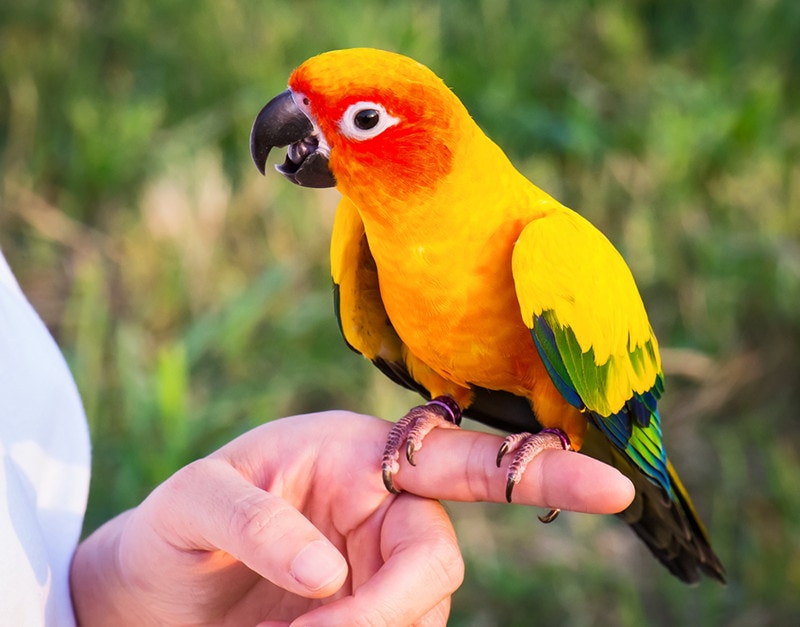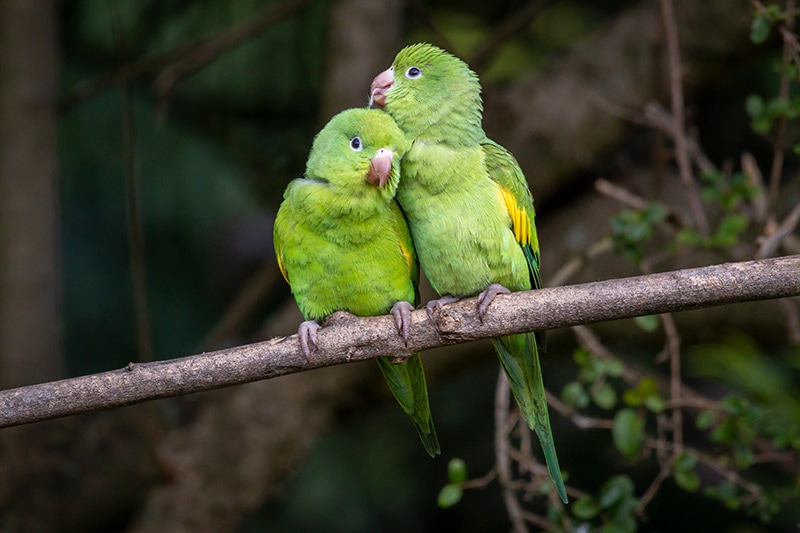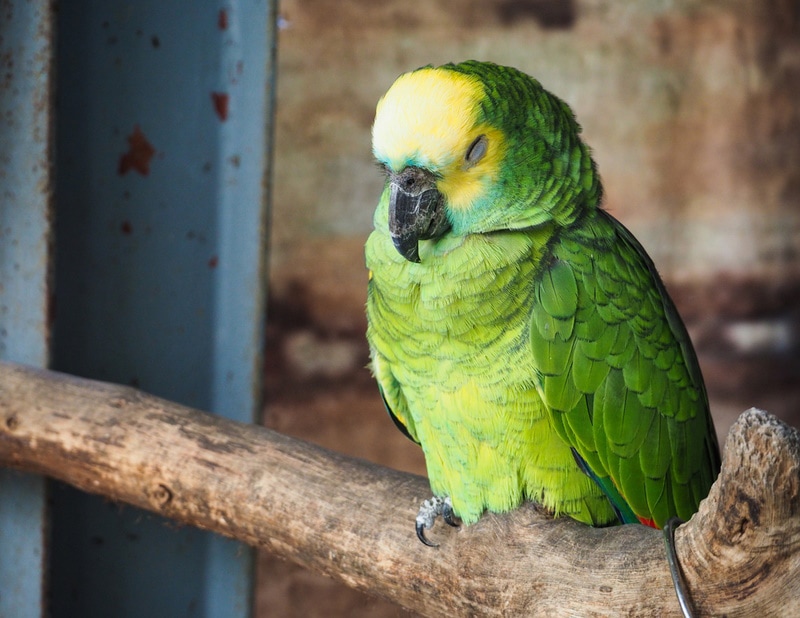How to Train a Parakeet: 7 Tips & Tricks

Updated on

Click to Skip Ahead
Parakeets are smart and intelligent birds that seem to enjoy learning tricks and entertaining their humans. Training some basic commands can make your life easier. For example, if you can train your bird to hop on your finger on command, it will be easier to get them in and out of their cage.
Even teaching them to wave lets you check their claws for possible signs of damage. Training, which typically involves fun games, can also help develop a bond between the two of you. And it will exercise your Parakeet’s brain, which means it can prevent behavioral and destructive activities.
Because they are smart birds, parakeets can learn quickly. They can even learn to say a few words, although it isn’t always easy to discern exactly what a parakeet is saying. Below are some tips and tricks to help you successfully train your pet parakeet.
The 7 Tips & Tricks for Training a Parakeet
1. Start Simple
Don’t get carried away straight away. Parakeets are intelligent, but you shouldn’t expect them to be able to put together complex sequences of actions on your command. Start with something basic like stepping onto your finger. This is a practical trick to teach and one that you can use every day. It is also a relatively easy trick to teach compared to some of the more challenging ones.
2. Praise and Reward
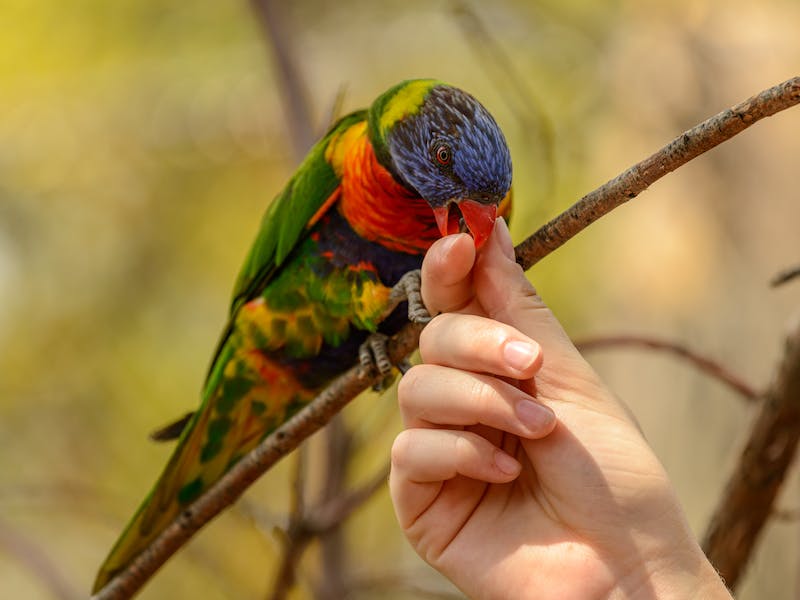
Parakeets respond to positive reinforcement. Use treats to encourage the movement you want and when your feathered friend listens and successfully performs the desired action, give it one of its favorite treats and offer plenty of praise. Keep offering these positive reactions and, eventually, your parakeet will understand what you want and will be inclined to repeat the process on request.
3. Take It Slowly
Don’t expect too much, too soon. You might be able to teach your bird a new trick in a few days. Or it could take several weeks. Parakeets all learn at different rates, and you won’t know how quickly yours learns until you start training. Try and ensure that you get one trick down before moving on to the next one, to avoid confusion and to increase the chances of both tricks being successfully taught.
4. Turn It into a Game
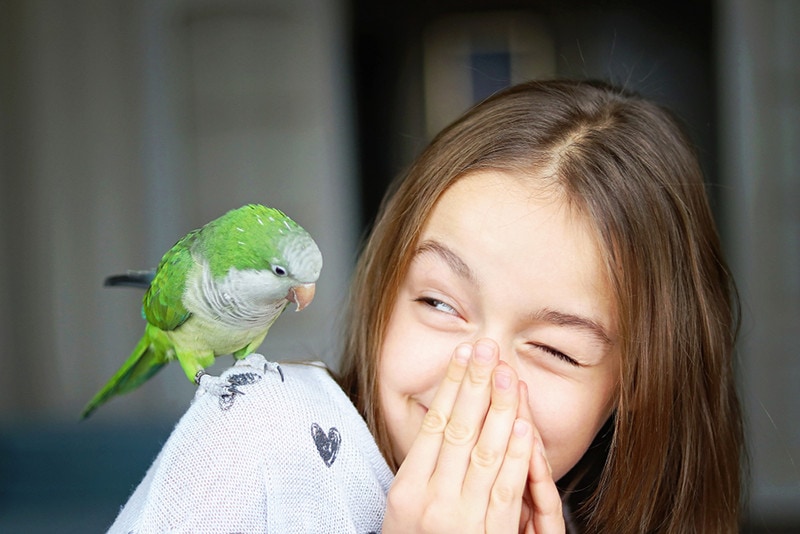
Spending time with your parakeet should be an enjoyable experience for both of you. It will help build a strong bond between you and it will make learning easier and more successful. Don’t stress out if your bird isn’t picking up a new trick in the first few days and try making training as fun as possible. Use your parakeet’s favorite toys, offer its favorite treats as rewards, and find other ways to make training as engaging and enjoyable as possible.
5. Be Consistent
Be consistent with the commands you use and the training techniques you employ. If you keep changing commands or using different words every time you train your bird, it won’t know what to respond to and won’t know what you expect of it. You can also try training your bird at a similar time every day. Getting into a habit will help both of you and increase the chances of success.
6. Repeat
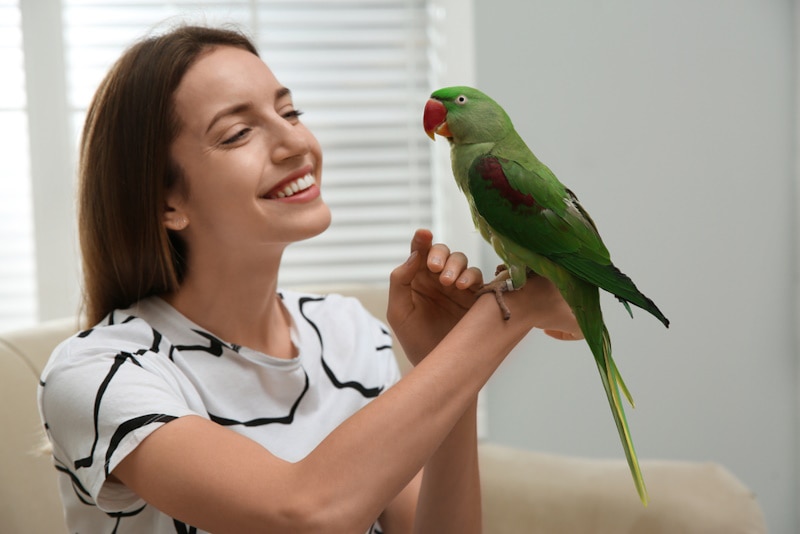
It will take multiple repetitions of a single command and the associated action to teach your parakeet a new command. Therefore, you need to repeat the training exercise. Try training a command a few minutes a day for a few days and, eventually, you should be able to have your parakeet do what you want just by saying the word.
7. Make It a Daily Practice
As well as being consistent with your methods, you should be consistent with the time you dedicate to training. Start with 5-minute training sessions and keep the practice up every day. There will be times when you won’t be able to train every day. Other commitments get in the way and there may be some days when either you or your bird don’t feel it. If you do miss a day, it won’t set the training back. Just get back on it the next day.
The 6 Basic Tricks to Teach
There are many things you can teach a parakeet, but it is best to start with the basics. This helps you master the training technique, and it also helps your parakeet understand what is expected of it. Some of the basic commands you can teach include:
1. Step Up
This is the first trick that a lot of owners teach their birds. It has the bird step up onto your finger and it is a good way to get your parakeet out of and back into the cage. It can also be useful in other circumstances. Start by holding your finger under your bird’s belly and say, “Step up” or just “Up”. Push your finger gently against the bird’s belly, which should encourage it to naturally hop onto your finger. Offer praise and give a reward when the bird successfully completes the step up. If your parakeet isn’t comfortable getting on your finger, you can start with a perch and move on to the finger later.
2. Wave
Hold a small treat in your hand and just out of reach of your bird. Say “wave” and keep the treat where it is. When the bird takes the treat in its hand, praise and reward.
3. Spin
Hold a treat to the side of your bird. When it starts to turn to get the treat, say “spin” and then keep moving the treat so that the parakeet performs a full turn. When it completes on full turn, praise and reward.
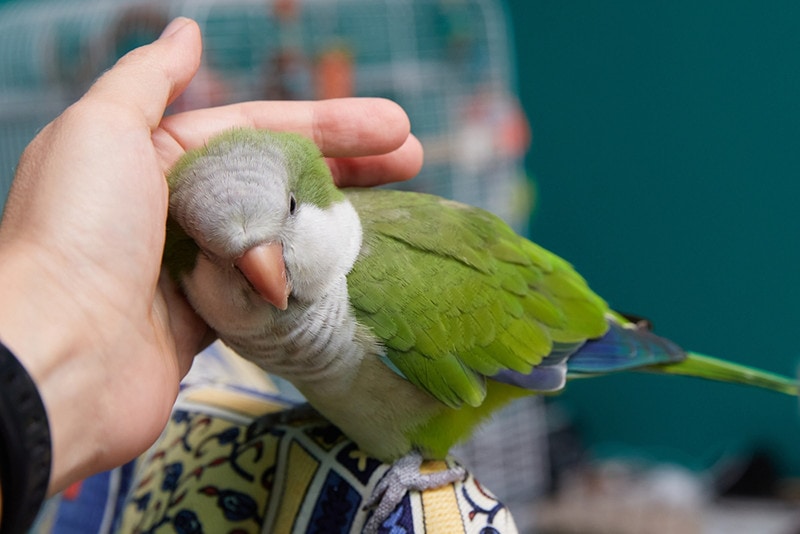
4. Touch
Have your bird touch a target or object by holding that object in front of your bird and saying touch. When the bird touches the object, praise and reward.
5. Play Dead
This can be a little trickier than the tricks you’ve already learned, and it does require a lot of trust between you and your bird. Lay your bird gently on its back and say dead or play dead. When they lay still on their back, praise and reward.
6. Fetch
Hold an object, such as a small bell, in front of your bird and say fetch. When they grab the item, offer praise and give a reward.
How to Tame a Parakeet
Before you can start teaching basic tricks and other commands, you will need to hand-tame it and ensure that it has some degree of trust in you. Before you put your hand in the cage, spend a few days talking to the bird as you go about your day. Eventually, it will trust the sound of you and let you put your hand in the cage. If the parakeet starts flapping and going mad, speak softly and try to reassure the bird. If this doesn’t work, take your hand out of the cage and try again the next day.
Persist with your efforts and, eventually, the bird will let you put your hand in. When you can put your hand, try putting a seed or a favorite treat in the palm of your hand to encourage the parakeet to investigate. Be persistent, don’t make sudden movements, and let the parakeet take things at its pace.

Can Parakeets Learn to Talk?
Although some may never repeat a single human word, some parakeets become highly accomplished talkers. If you want to teach your parakeet to talk, repeat the same word clearly to your bird. When they try to mimic you, say the word again. It is best to start with simple words like hello, but some parakeets have developed vocabularies of hundreds of words.
When Should I Start Training My Parakeet?
You can start training a parakeet virtually as soon as you get it. They generally leave their mothers at around 8 weeks, and after a short period to allow the bird to settle into its new cage and get used to its new surroundings, you can start trying to teach the “step up” command and even try teaching it a few basic words.
How Can I Bond with My Parakeet?
Training your parakeet is a great way for the two of you to bond. Especially if you make training sessions short, playful, and rewarding. Pretty much any activity that involves the two of you will enhance the bond that exists. Talk to your bird, spend as much time in its presence as possible, and play games with it. Keep up the exercises and you will form a really strong bond.

Conclusion
Parakeets make great pets because they’re bright, intelligent, and they can be taught tricks quickly. Start training when your parakeet is young, be consistent with your commands and with your praise and rewards, and try to put aside time to practice every day. Training is not only fun and engaging, but it also helps build a strong bond between you and your bird. Some commands can also make your life a little easier.
See Also:
- Rose-Ringed Parakeet: Pictures, Personality, Food & Care Guide
- How to Teach a Parakeet to Talk: 9 Easy Tips
Featured Image Credit: lucsim75, Shutterstock


